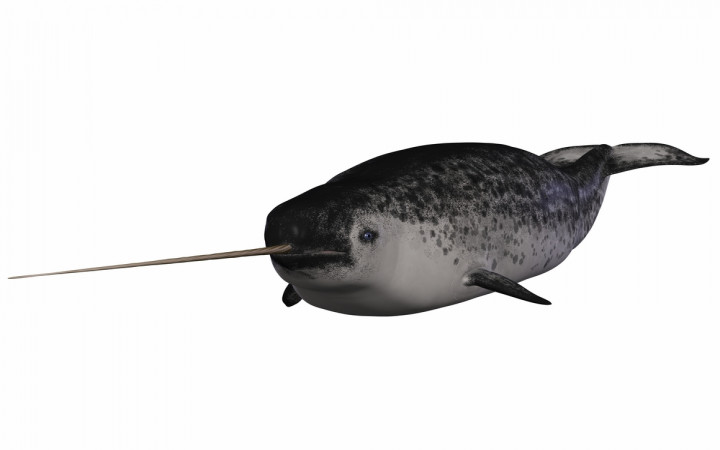Today’s Wonder of the Day was inspired by Alyssa. Alyssa Wonders, “Why do narwhals have a tooth on their head?” Thanks for WONDERing with us, Alyssa!
If you love unicorns — and, really, who doesn't? — then you're going to love learning about “the unicorn of the sea." No, it's not an underwater horse. And it doesn't sparkle. But it's a magical creature all the same.
What are we talking about? The narwhal, of course! Sometimes called “the Arctic unicorn," narwhals are small whales (about 15-16 feet long) that live in the icy waters of the Atlantic and Russian areas of the Arctic Ocean, near Canada and Greenland.
Narwhals are most closely related to the beluga whale. Male narwhals feature a unique, defining physical characteristic: a long protrusion from the upper left jaw that looks like a tusk or a horn. In medieval times, people believed that narwhal tusks were the horns of the legendary unicorn.
In reality, though, a narwhal tusk is not a unicorn horn. In fact, it's not a horn at all. Would you believe it's a tooth? It's true!
Male narwhals have a left incisor tooth that grows outward straight through the left side of the upper jaw. It can grow up to almost 10 feet in length with a distinctive spiral shape. Female narwhals also have a similar tusk that's much shorter and straighter.
A narwhal's right incisor is normally small, but occasionally it also grows out. These “two-horned" narwhals are very rare.
Scientists aren't completely sure what purpose narwhal tusks serve. At one time, people believed they might be used to break ice or spear fish. Further study has shown, though, that they're most likely used in mating rituals to impress females or battle rival males.
Narwhals feed on fish that swim deep under the Arctic ice. In fact, narwhals are known for making some of the deepest dives of any marine mammal. Narwhals have been known to dive to depths of over 2,500 feet over 15 times per day, with some dives reaching as deep as almost 5,000 feet!
Today, they're still hunted legally by the Inuit peoples of Canada and Greenland. Known for their ability to use all parts of the narwhal, the Inuit peoples eat narwhal meat, harvest their tusks to use as tools, and even eat their skin, which is a good source of vitamin C.
The name narwhal comes from the Old Norse words nar (corpse) and whal (whale). Narwhals were likely called “corpse whales" because of their pale, mottled coloring that made them look like drowned sailors!
In the Middle Ages, people believed narwhal tusks were unicorn horns with magical powers, such as the ability to render poison harmless. As a result, traders could sell narwhal tusks for many times their weight in gold. Royalty bought these tusks to make cups they believed would keep them from ever being poisoned.




